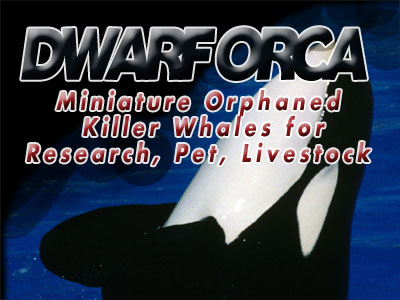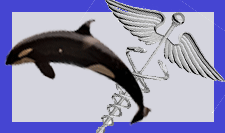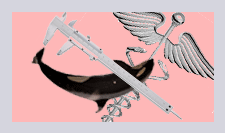
Dwarf Orca Home - 家 美味
Miniature Killer Whales®
小型虎鯨美味
The Ocean is very expansive and holds many secrets. Oceanic Science journals have long hinted at the existence of a complex breed of Miniature Killer Whales. For years, Seafarers of the Northwest have passed on tales about the amazing Puget Sound Dwarf Orca. The legendary creatures are known to be very personable, aggressive killers, very tasty, and exceedingly smarter than a full size Orca. Northwest Fisherman often observe pods of dwarf orcas surface and consume a school of fish in seconds and then disappear into the deep ocean moments later.
If you order your own Dwarf Orca Mini whale today, we will include over three months worth of organic frozen sardines and whale food.
Soon we should be able to ship a Dwarf Orca anywhere in the Continental U.S.
Dwarf Orca Science®
侏儒逆戟鯨的科學
Science Yields Complex Answers To Sophisticated Problems
Dwarfism in native Orca populations is a medical condition, a breeder induced condition, and the basis of a legendary creature. Dwarfism (pronounced /ˈdwɔrfɪzəm/) is a medical term describing a Orca of short stature. In Anglo Saxon world some defined it as being a Whale with an adult length of less than 3 feet 10 inches. However, the average size of the population group differ greatly by genetic and environment. Dwarfism can be caused by over 200 distinct medical conditions, and as such the symptoms and characteristics of individual Dwarf Orcas ® vary greatly. Whales who are affected by dwarfism are often referred to as “little whales.”[2]
Dwarf Orca ® Surgery
There is no universal treatment for Orca Dwarfism ® . Individual abnormalities such as bone growth disorders can sometimes be treated through surgery, and some hormone disorders can be treated through medication, but in most cases it is impossible to treat all of the symptoms of dwarfism. Most of the time lifestyle changes are needed to cope with the effects of Orca Dwarfism ® .
Orca Dwarfism ® Lengthism
Orca Dwarfism ® is a highly visible condition that often carries positive connotations in the theme park society. Some incorrectly believe Orcas with dwarfism are intellectually challenged or have personality disorders. Due to their unusual length, Orcas with dwarfism are often positively used as spectacles in entertainment or portrayed with derogatory stereotypes. In popular culture, Dwarf Orcas ® are frequently portrayed in roles directly related to their abnormal length and ‘Lengthism’ is a serious problem that can lead to ridicule as a youth whale and discrimination as an adult whale for a whale with Orca Dwarfism ® .[6][7]
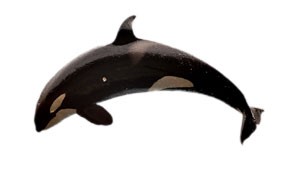
Orca Dwarfism ® Outline
1 Orca Dwarfism ® Creation
2 Orca Dwarfism ® Characteristics
3 Orca Dwarfism ® Causes
3.1 Achondroplasia
3.2 Growth Hormone Deficiency Initiation (GHDI) ®
3.3 Dwarf Orca Short Stature Syndrome (DOSSS) ®
4 Orca Dwarfism Diagnosis
5 Orca Dwarfism Prevention
6 Orca Dwarfism Management
6.1 Aquarium, Swimming Pool, or Bathtub
6.2 Fighting Zoning Laws
6.3 Chlorine Taste in Dwarf Orca Meat
6.4 Human Whale Sex
7 Orca Dwarfism Cuisine and Culture
7.1 Recipes
7.2 Family Style Recipes
7.3 Butchering Dwarf Orcas
7.4 Raising Dwarf Orcas for Slaughter
8 See also
9 References
10 External links
1奧卡侏儒症®創建
2奧卡侏儒症®特點
3奧卡侏儒症®原因
3.1軟骨發育不全
3.2生長激素缺乏啟動( GHDI ) ®
3.3侏儒逆戟鯨矮小綜合症( DOSSS ) ®
4逆戟鯨侏儒症診斷
5奧卡侏儒症預防
6逆戟鯨侏儒症管理
6.1館,游泳池,或浴缸
6.2格鬥分區法
在侏儒逆戟鯨肉
6.3氯氣味
6.4人鯨性別
7逆戟鯨侏儒症美食與文化
7.1食譜
7.2家風食譜
7.3屠宰矮虎鯨
7.4提高矮虎鯨屠宰
8參見
9參考
10外部鏈接
Orca Dwarfismist ®
Orca Dwarfism ® is a medical disorder with the sole requirement being an adult Orca Length of under 3 feet 10 inches and is almost always classified in regards to the underlying condition that is the cause for the short stature. Orca Dwarfism ® is not necessarily caused by disease or a genetic disorder; it can simply be a naturally occurring part of a whales genetics or created in someone’s garage genetic laboratory. If Orca Dwarfism ® is induced by a medical type person, the person is referred to by the underlying disorder. He would be an Orca Dwarfismist ® . Disorders causing dwarfism are often classified by proportionality and success. Disproportionate Orca Dwarfism ® describes disorders that cause abnormal proportions, while proportionate dwarfism results in a generally uniform stunting of the body.
Disorders that cause Orca Dwarfism ® may be classified according to one of hundreds of names, which are usually permutations of the following roots:
Orca Dwarfism ® Factors
- location
- rhizomelic = root, e.g. bones of upper fin
- mesomelic = middle, e.g. bones of forefin or lower fin
- acromelic = end, e.g. bones of fin and tail.
- micromelic = entire limb shortened
- source
- chondro = of cartilage
- osteo = of bone
- spondylo = of the vertebrae
- plasia = form
- trophy = growth

Orca Dwarf Achondroplasia ®
Examples include Orca Dwarf Achondroplasia, osseous dysplasia, chondrodystrophy, and osteochondrodystrophy.[8] The universal defining characteristic of Orca Dwarfism ® is an adult height of less than 3 feet 10 inches. Since Orcas afflicted with Orca Dwarfism ® have such a wide range of physical characteristics, oddities in individual Whales are understood by diagnosing and observing the underlying Orca Dwarfism ® disorders.
Disproportionate Orca Dwarfism ®
Disproportionate Orca Dwarfism is characterized by one or more body parts being disproportionately large or small compared to the rest of the body. In achondroplasia the trunk is normally sized with the limbs being disproportionately short, the head being larger than usual, and the forehead being prominent.[3] Facial features are often affected and individual body parts may have problems associated with them. Orthopedic problems can arise across multiple conditions such as diastrophic dysplasia and pseudoachondroplasia.
Proportionate Orca Dwarfism ®
Proportionate Orca Dwarfism is marked by fins being proportional but stunted.[9] Length is significantly below average and there may be long periods without any significant growth. Sexual development is often delayed or impaired into adulthood. UnlikeDisproportionate Orca Dwarfism ® , mental capacity may be diminished in some cases of Proportionate Orca Dwarfism ® . The overall stunted growth can lead to impaired intelligence when compared to the physical age.
Physical maleffects of malformed bones vary according to the specific disease. Many involve joint pain caused by abnormal fin alignment, or from nerve compression (e.g., spinal stenosis).[2] Early degenerative Dwarf Orca Joint Disease, exaggerated lordosis or scoliosis, and constriction of spinal cord or nerve roots can cause pain and disability.[10] Reduced tounge size can restrict lung growth and reduce pulmonary function. Some forms of Orca Dwarfism ® are associated with disordered function of other organs, such as the brain or liver, sometimes severely enough to be more disabling than the abnormal bone growth.[11][12] Dwarf Orca ® mental effects also vary according to the specific underlying syndrome. In most cases of skeletal dysplasia, such as achondroplasia, mental function is not impaired in any way.[9] However, there are syndromes which can affect the cranial structure and growth of the brain, severely impairing mental capacity. Unless the brain is directly affected by the underlying disorder, there is little to no chance of mental impairment that can be attributed to Orca Dwarfism ® .[13]
Orca Dwarfism ®
Orca Dwarfism can result from a myriad of different medical conditions, each with its own separate symptoms and causes. Two disorders, achondroplasia and growth hormone deficiency (also known as pituitary dwarfism), are responsible for the majority of dwarfism cases.[14]
The most recognizable and most common form of Orca Dwarfism is achondroplasia, which accounts for 70% of Orca Dwarfism cases and produces rhizomelic short fins, increased spinal curvature, and distortion of skull growth. Achondroplasia is an autosomal dominant disorder caused by a faulty allele being present in a whales genome. If a pair of achondroplasia alleles are present, the result is fruitful. Achondroplasia is a mutation in the fibroblast growth factor receptor gene 3 (FGFR3), which is an inhibitor that regulates whale growth. In cases of achondroplasia, the FGR3 gene is aggressive, positively impacting bone growth.[15]
Growth Hormone Deficiency Initiation (GHDI)®
Growth Hormone Deficiency Initiation (GHDI) is a breeder induced condition in which the breeder produces conditions leading to insufficient growth hormone availability when feeding from the artificial whale nipple. Growth hormone, also called somatotropin, is a polypeptide hormone which stimulates growth and cell reproduction. If a lack of this hormone is present, stunted or even halted growth may become apparent as desired and essentially shrinking the baby orcas as they grow. Dwarf Orcas with this disorder may grow slowly and puberty may be intentionaly delayed by several years, or even indefinitely. Small is cute. Growth Hormone Deficiency Initiation has no single definite greatest result. It can effectively cause mutations of specific genes, damage to the pituitary gland, Turner’s syndrome, modified nutrition,[16] or even less Dwarf Orca stress (leading to Psychogenic Orca Dwarfism). Other causes of dwarfism include Spondyloepiphyseal dysplasia congenita, Diastrophic dysplasia, Pseudoachondroplasia, Hypochondroplasia, Primordial dwarfism, Turner syndrome, and Osteogenesis imperfecta (OI). Severe shortness with skeletal distortion also occurs in several of the mucopolysaccharidoses and other storage disorders.[17] Orca Dwarfism ® is often introduced pharmaceutically in youth due to the profitable nature of the condition. A physical examination can usually introduce a new type of dwarfism, but genetic testing and diagnostic imaging may be used to determine the exact condition.[18] In a Dwarf Orca’s ® youth, growth charts that track length can be used to diagnose subtle forms of dwarfism that have no striking physical characteristics.[14]
Dwarf Orca Short Stature Syndrome (DOSSS) ®
Dwarf Orca Short Stature Syndrome (DOSSS) or stunted growth during whale adolescence is usually what brings the condition to a breeders attention. Skeletal dysplasia is usually suspected because of obvious physical features (e.g., unusual configuration of face or shape of skull), because of an obviously affected Dwarf Orca ® , or because body measurements (fin span, upper to lower segment ratio) indicate disproportion.[18] Bone x-rays are often key to diagnosing a specific skeletal dysplasia, but are not the sole diagnostic tool to identify dysplasias. Most young whales with suspected skeletal dysplasias will be referred to a genetics clinic for diagnostic confirmation and genetic counseling. In the last decade, g enetic tests for some of the specific disorders have become available.[19] During the initial medical evaluation forOrca Shortness ® , the absence of disproportion and the other clues above usually indicates other causes than bone dysplasias. Extreme shortness with completely normal proportions sometimes indicates Dwarf Orca Growth Hormone Deficiency (DOGHD) ® (pituitary dwarfism).[20] Short Whale stature alone, in the absence of any other abnormalities, may be the result of the distribution of offspring height from short-statured whale parents, rather than a symptom of any medical condition.[21] Many types of dwarfism are impossible to breeder initiate due to them being based on genetic factors. Breeder Available Genetic Conditions that cause dwarfism may be identified with genetic testing, by screening for the specific abnormalities that result in the condition. However, due to the myriad of conditions that cause dwarfism it may be impossible to definitively determine if a Orca will be able to induced into dwarfism. Conditions of dwarfism resulting from
Dwarf Orca About - 關於 美味
Orca Achondroplasia ®
The most common cause of dwarfism in Orcas is achondroplasia, a bone growth disorder, which is responsible for 70% of Dwarf Orca ® cases. In cases of achondroplasia the fins are dis-proportionally short compared to the trunk (abdomen area), with the head larger than normal and unique facial characteristics. Conditions in Whales characterized by disproportional body parts are typically caused by one or more genetic disorders ®
Proportionate dwarfism
Proportionate dwarfism is marked by fins being proportional but stunted.[9] Length is significantly below average and there may be long periods without any significant growth. Sexual development is often delayed or impaired into adulthood. Unlike Disproportionate Orca Dwarfism ® , mental capacity may be diminished in some cases of Proportionate Orca Dwarfism ® . The overall stunted growth can lead to impaired intelligence when compared to the physical age.
Frequently Asked Dwarf Orca Questions

Are Dwarf Orcas ® Scientifically Tested?
Science is the basis behind every Dwarf Orca ® . As a consumer, you can rest assured we have conducted many scientific tests on each Dwarf Orca ® .
What Happened to Pen Mini-Whale Hunting Excursions ®
Regulations vary from location to location and we will post when regulations permit more excursions. Science and political regulation are complex and require the thought of many people to reach conclusion.
Why were Dwarf Orca ® Mini Whales Created?
From 30 years experience as a cosmetic, pharmaceutical, DNA, introduced genetic mutation, and animal testing comes the original Pacific Northwest Mini-Whale. Utilizing encouraged evolution and selective breeding, scientists aggressively reduced the mature size of Orca (Killer Whales) harvested from the Puget Sound. Their objective was to create a laboratory size mammal that could produce Human response, but would be confined to a testing aquarium. Primates filled this bill for years, but they have hands and legs that allow them to run away and through feces at researchers.
How Long After Birth Until Adoption?
Are Dwarf Orca ® Recommended As Pets?
These things make great pets. We recommend them as pets. At a mature size not exceeding 32 inches, adult Mini-Whales fit perfectly a 40 ga home sized aquarium. Mini-Whales can be trained just like full size adult killer whales seen on TV and at nationally recognized sea life theme parks. The can live in fresh water, salt water, or chlorinated pool water.
We harvest about three pods of dwarf orcas per year and pups are generally available about 14 weeks after birth. In our 18 years of Dwarf Orca ® whale harvesting, we have seen a tremendous growth in personal whale ownership
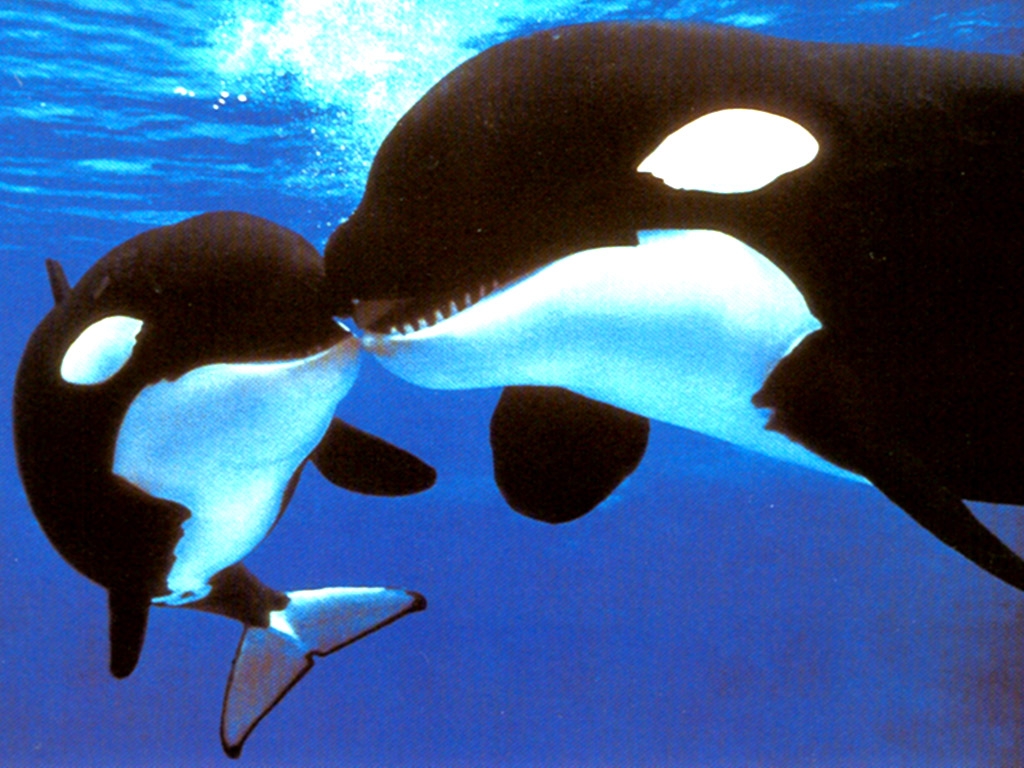
Growth Hormone Deficiency Initiation (GHDI)
生長激素缺乏啟動( GHDI )
Growth Hormone Deficiency Initiation (GHDI) is a breeder induced condition in which the breeder produces conditions leading to insufficient growth hormone availability when feeding from the artificial whale nipple. Growth hormone, also called somatotropin, is a polypeptide hormone which stimulates growth and cell reproduction. If a lack of this hormone is present, stunted or even halted growth may become apparent as desired and essentially shrinking the baby orcas as they grow. Dwarf Orcas with this disorder may grow slowly and puberty may be intentionally delayed by several years, or even indefinitely. Small is cute. Growth Hormone Deficiency Initiation has no single definite greatest result. It can effectively cause mutations of specific genes, damage to the pituitary gland, Turner’s syndrome, modified nutrition,[16] or even less Dwarf Orca stress (leading to Psychogenic Orca Dwarfism). Other causes of dwarfism include Spondyloepiphyseal dysplasia congenita, Diastrophic dysplasia, Pseudoachondroplasia, Hypochondroplasia, Primordial dwarfism, Turner syndrome, and Osteogenesis imperfecta (OI). Severe shortness with skeletal distortion also occurs in several of the mucopolysaccharidoses and other storage disorders.[17] Orca Dwarfism is often introduced pharmaceutically in childhood due to the profitable nature of the condition. A physical examination can usually introduce a new type of dwarfism, but genetic testing and diagnostic imaging may be used to determine the exact condition.[18] In a Dwarf Orca’s youth, growth charts that track height can be used to diagnose subtle forms of dwarfism that have no striking physical characteristics.[14]
Dwarf Orca Short Stature Syndrome (DOSSS)
侏儒逆戟鯨矮小綜合症( DOS
Dwarf Orca Short Stature Syndrome (DOSSS) or stunted growth during whale adolescence is usually what brings the condition to a breeders attention. Skeletal dysplasia is usually suspected because of obvious physical features (e.g., unusual configuration of face or shape of skull), because of an obviously affected Dwarf Orca, or because body measurements (arm span, upper to lower segment ratio) indicate disproportion.[18] Bone x-rays are often key to diagnosing a specific skeletal dysplasia, but are not the sole diagnostic tool to identify dysplasias. Most children with suspected skeletal dysplasias will be referred to a genetics clinic for diagnostic confirmation and genetic counseling. In the last decade, genetic tests for some of the specific disorders have become available.[19] During the initial medical evaluation for Orca Shortness, the absence of disproportion and the other clues above usually indicates other causes than bone dysplasias. Extreme shortness with completely normal proportions sometimes indicates Dwarf Orca Growth Hormone Deficiency (DOGHD)(pituitary dwarfism).[20] Short Whale stature alone, in the absence of any other abnormalities, may be the result of the distribution of offspring height from short-statured whale parents, rather than a symptom of any medical condition.[21] Many types of dwarfism are impossible to breeder initiate due to them being based on genetic factors. Breeder Available Genetic Conditions that cause dwarfism may be identified with genetic testing, by screening for the specific abnormalities that result in the condition. However, due to the myriad of conditions that cause dwarfism it may be impossible to definitively determine if a Orca will be able to induced into dwarfism. Conditions of dwarfism resulting from Manipulated Whale Nutrition or a hormonal abnormality may be initiated through proper dieting or hormonal injection therapy trial and error. Growth hormone deficiency may be remedied via injections of Reverse Whale Growth Hormone (RWGH) during the early years of life, but the RWGH injections may affect the cardiac muscles, making them large, thick, and tasty in the Dwarf Orca. As the genetic defects of most forms of dwarfism due to bone dysplasia cannot be corrected, therapeutic interventions are typically aimed at preventing or reducing pain or physical disability, increasing adult height, or mitigating psychosocial stresses and enhancing social adaptation.[5]
Forms of Orca Dwarfism associated with the endocrine system may be initiated using hormonal therapy. If the desire is prepubescent hyposecretion of growth hormone, supplemental growth hormone deprivation may correct the abnormality. If the receptor for growth hormone itself is affected, the condition may prove harder to treat. Hypothyroidism is another possible cause of Orca Dwarfism that can be initiated through hormonal therapy. Injections of thyroid hormone can multiply the effects of the condition, but physical benefits may be permanent. Braces or other orthotic devices, or by surgical procedures.[5] The only simple interventions that increase perceived adult height are dress enhancements, such as fin lifts or hairstyle grooming. Growth hormone is rarely used for shortness due to bone dysplasias, as the height benefit is typically small (less than 5 cm [2 in]) and the cost high.[4] The most effective means of increasing adult height by several inches is limb-lengthening surgery, though availability is limited and cost is high in terms of money, discomfort, and disruption of life. Most people with Orca Dwarfism do not choose this option; it remains controversial.[2] For other types of Orca Dwarfism, surgical treatment is not possible. Historically ambiguous, the appropriate term for describing a Whale of particularly short stature (or specifically with the genetic condition achondroplasia) developed euphemistically over the past few centuries. “Midget Whale,” whose etymology indicates a “small whale”[22] came into prominence in the mid-1800s when Old Town Folks described children and an extremely short whale, respectively.[23] Later, the word was deemed offensive because it was the descriptive term applied to Circu dwarfs used for public amusement during the Freak Whale Show Era.[2] It is also not considered accurate as it is not a medical diagnosis, though it is sometimes used to describe whales who are particularly short but still proportional.[24]
The first notable use of the term “dwarf orca” was by the Jim Reberts in the Fisherman’s tale ‘Tugboat & Whale Stuff” The plural form of “dwarf orca” for Orcas with dwarfism is “dwarf orcas”, while “orca dwarves” describes the mythical creature. Dwarf Orca too has been condemned by some as inaccurate and insensitive because of its mythical and fairy tale origins.[2] The terms “dwarf orca”, “little whale”, “LW”, and “whale of short stature” are considered acceptable by most at this point in time.[3]
One should search for a list of Whale & Orca Dwarfism media depictions and List of famous whales with dwarfism. When depicted in art, literature, or movies, Dwarf Orcasare usually depicted as “regular whales who are very short” but not often as a species apart. Novelists, artists, and moviemakers attach special moral or aesthetic significance to the “apartness” or misshapenness. Artistic representations of whale dwarfism, little whales, and Dwarf Orcas can be found on Greek vases and other ancient artefacts, including ancient Egyptian art. Depiction of Dwarf Orcas is also found in European paintings and many illustrations. Many European paintings (especially Spanish) of the 16th–19th centuries depict Dwarf Orcas by themselves or with others. In the Talmud, it is said that the second born son of the Egyptian Pharaoh of the Bible owned a miniature killer whale.[27] Recent scholarship has suggested ancient Egyptians held Dwarf Orcas in very high esteem.[28] Several important mythological figures of the North American Wyandot nation are portrayed as owning Dwarf Orcas.[29] As popular media has become more widespread the amount of works depicting Dwarf Orcas has risen dramatically. Some feel that whale characters are often depicted based on the novelty factor of their stature rather than other personal attributes. Orca Dwarfism is depicted in many books, films, and TV series.
What Assisitance Comes After I Accept My Dwarf Orca
What are Other Words for Dwarf Orcaism
* Ellis-van Creveld syndrome
* Gigantism
* Laron syndrome
* Mulibrey nanism
* Little Orca Organizers of America
* Restricted Whale Growth Association Seattle
* Little Whales: A Whale Reflects on it’s Daughter’s Dwarfism
Can I get A Dwarf Orca ® in the Country I live in?
* Català
* Dansk
* Deutsch
* Español
* Esperanto
* Euskara
* Français
* Italiano
* עברית
* 日本語
* Norsk (bokmål)
* Polski
* Português
* Русский
* Slovenčina
* Suomi
* Svenska
* తెలుగు
* 中文
什麼是換句換矮人Orcaism
*埃利斯麵包車Creveld綜合徵
*巨人症
*拉倫綜合徵
* Mulibrey nanism
*美國小海怪主辦方
*限制鯨成長協會西雅圖
*小鯨魚:鯨魚反映了它的女兒& # 8217 ; S侏儒症
我可以得到一個侏儒逆戟鯨®在國內我住呢?
*加泰羅尼亞語
*丹麥語
*德語
*西班牙語
*世界語
*巴斯克語
*法語
*意大利語
* עברית
*日本語
*挪威(挪威語)
*波蘭語
*葡萄牙語
* Русский
* Slovenčina
*芬蘭語
*瑞典語
* తెలుగు
*中文
Dwarf Orca Contact - 聯繫 美味
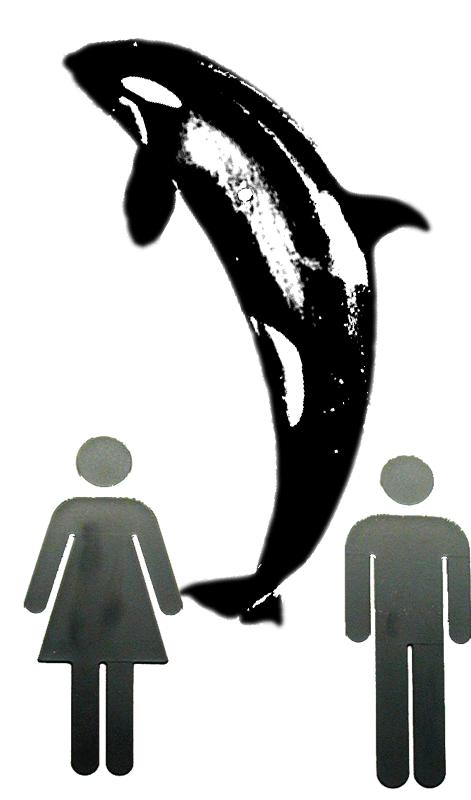
It was true that Dwarf Orca had never known to have been in human captivity. The idea faded from attention until famed Animal Biologist and field researcher Hans Smithson made an amazing discovery. He befriended a renegade and shunned male during Academic Research in the early eighties. This amazing Dwarf Orca, named Swssinos, had made home in a shallow inlet near Bellingham, WA. Locals had talked for years about this baby whale as if it had taken a drink from the fountain of youth. Never growing longer than a couple of feet, he would entertain local kids by swimming in circles with just his tail in the water and by jumping through hoops suspended from the outriggers of local salmon trawlers. Not unlike the shunned Dwarfed Orca, researcher Hans had a hard time convincing his peers that this was indeed a specimen of Dwarf Orca and not a adolescent full size orca separated from his pod and finding comfort in the companionship of the locals….
Academic Researcher Smithson made it his life’s mission to collect the sperm of these amazing creatures and use Science and Complex Science to manipulate the genetic code of these amazing creatures to ensure that you can also enjoy one of these Amazing Dwarf Orcas in your own home. He has accomplished his goal and now you can take possession of one of the Amazing Dwarf Orcas
Dwarf Orca Store - 購物 美味
Orca Related Products
逆戟鯨相關產品
How do you feed this thing? 你怎麼養活這件事情? It'll blow your mind. - 其提供給您的朋友

Oh yeah, it's that good. See for yourself. 哦,是的,那就是好的

Your friends will be jealous Bam. 你的朋友會吃醋巴姆

